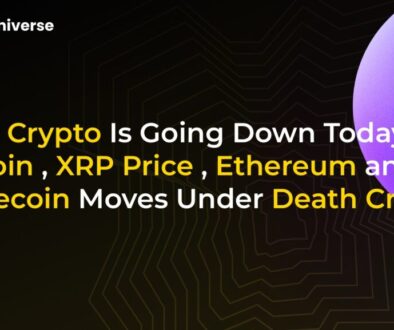1 Top Cryptocurrency to Buy Before It Soars 18,200%, According to Billionaire Michael Saylor

Bitcoin’s Next Frontier: A Jaw-Dropping Price Prediction
With Bitcoin recently smashing its previous all-time highs, the crypto community is buzzing with speculation: what’s next for the king of cryptocurrencies? While many analysts are forecasting a steady climb, one of the industry’s most prominent figures has a vision that is far more audacious. Michael Saylor, the executive chairman of MicroStrategy and a vocal Bitcoin evangelist, believes the real party is just getting started, suggesting that BTC could see returns of over 18,200%.
This isn’t just wishful thinking; it’s a calculated prediction based on a long-term thesis. Saylor has put a specific number and a timeline on his forecast: $21 million per Bitcoin by the year 2046.
It’s a figure that sounds almost impossible. Let’s break down what this prediction entails, the logic behind it, and whether it’s a visionary forecast or a speculative fantasy.
The Math Behind the Moonshot: A $441 Trillion Asset
To understand the scale of Saylor’s prediction, we need to look at the numbers. Bitcoin has a hard-capped supply of 21 million coins. If each coin were worth $21 million, the total market capitalization of Bitcoin would be a staggering $441 trillion.
For context:
- The entire U.S. stock market is valued at around $64 trillion.
- The total value of all global wealth is estimated to be around $500 trillion.
Saylor’s prediction implies that Bitcoin would not only surpass but dwarf the value of every publicly traded company in the world’s largest economy. It would represent the vast majority of global wealth. So, how could this possibly happen?
The Bull Case: Why Saylor Believes in a 21% Annual Growth
Saylor’s argument for a <18,200% price surge> isn’t based on short-term market hype. It’s built on a fundamental belief that Bitcoin will evolve into the world’s primary store of value, displacing other assets and becoming the base layer of the global economy. His thesis rests on a few key pillars:
1. The Ultimate Store of Value
Saylor views Bitcoin as a superior alternative to traditional stores of value like gold, real estate, and even stocks. He argues that capital naturally flows to the asset with the highest returns and the least resistance. In his view, Bitcoin is the “most liquid, fungible, free capital market in the world,” unencumbered by governments, regulators, or armies.
2. Absolute Scarcity
The unwavering limit of 21 million coins is Bitcoin’s most powerful feature. Unlike fiat currencies, which can be printed at will by central banks, Bitcoin’s supply is finite. As demand from individuals, corporations, and even nations grows, this fixed supply should theoretically drive its value exponentially higher.
3. The 21% Compound Return
The prediction of $21 million by 2046 isn’t a random number. It equates to a compounded annual growth rate of roughly 21%. Saylor frames this as a simple, powerful concept: “The only number you need to remember is the number 21.” This return rate is approximately double the long-term average return of the stock market, making it an incredibly attractive proposition for capital seeking growth.
A Reality Check: The Hurdles on Bitcoin’s Path
While the bull case is compelling, it’s essential to consider the significant challenges and counterarguments. The road to a $441 trillion market cap is far from guaranteed.
The Valuation Dilemma
Critics often point out that Bitcoin, unlike a company, doesn’t generate earnings or cash flow. Its value is derived entirely from what the next person is willing to pay for it—a concept often linked to the “greater fool theory.” While adoption and network effects provide a form of utility, valuing it with traditional metrics remains impossible, making it inherently speculative.
Competition and Regulation
Bitcoin doesn’t exist in a vacuum. It competes with thousands of other cryptocurrencies, some of which offer faster transactions or more advanced features. Furthermore, the threat of stringent government regulation remains a constant overhang. A coordinated global crackdown could severely hamper its adoption and value.
Short-Term Macroeconomic Pressures
Even if the long-term vision holds true, the journey will be volatile. Bitcoin’s price is heavily influenced by macroeconomic factors. For instance, decisions by the Federal Reserve on interest rates can create significant price swings. A period of high interest rates can make lower-risk assets more attractive, pulling capital away from speculative assets like crypto. Conversely, rate cuts and monetary easing can fuel bull runs. This demonstrates that Bitcoin, despite its decentralized nature, is still deeply connected to the traditional financial system it aims to disrupt.
The Final Verdict: Visionary Bet or Impossible Dream?
Michael Saylor’s prediction of a $21 million Bitcoin is undeniably extreme. It requires a complete paradigm shift in how the world perceives and uses money and value. It assumes Bitcoin will not just succeed but achieve total dominance over every other asset class.
For the average investor, this forecast should be seen less as a guaranteed roadmap and more as a representation of the ultimate bull case. It highlights the sheer scale of the opportunity if Bitcoin fulfills its potential as a global, decentralized store of value.
Whether Bitcoin ever reaches such astronomical heights is impossible to know. However, the core principles driving Saylor’s conviction—digital scarcity, decentralization, and its function as a hedge against monetary inflation—are the very reasons why it continues to attract capital and attention worldwide. The question for every investor remains: is this a once-in-a-generation opportunity or a speculative bubble of historic proportions?


